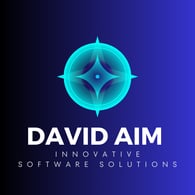Why Python Is the Best Language for AI & Machine Learning
Python dominates AI and machine learning with its simple syntax, vast libraries like TensorFlow & PyTorch, and frameworks like Flask & FastAPI for seamless deployment.
david aim
2/8/20252 min read


Why Python is the Best Choice for AI Development
Artificial Intelligence (AI) has transformed industries, from healthcare to finance, and Python has emerged as the go-to programming language for AI development. Python’s simplicity, extensive libraries, and robust frameworks make it an ideal choice for building AI applications.
1. Simple and Readable Syntax
Python's syntax is clear and concise, making it easy for developers to write and maintain AI code. Unlike other languages that require complex syntax, Python allows AI practitioners to focus on solving problems rather than dealing with intricate coding structures. This simplicity also makes Python accessible to beginners who are stepping into AI and machine learning.
2. Extensive Libraries and Frameworks
One of Python’s biggest strengths in AI development is its vast ecosystem of libraries. Some of the most popular AI and machine learning libraries include:
TensorFlow – An open-source framework developed by Google that provides powerful tools for deep learning and neural networks.
PyTorch – Developed by Facebook, PyTorch is widely used for research and production-level deep learning applications.
Scikit-learn – A comprehensive library for machine learning algorithms, including classification, regression, and clustering.
Keras – A user-friendly neural network library that works seamlessly with TensorFlow.
NLTK and SpaCy – Libraries designed for Natural Language Processing (NLP), enabling applications like chatbots and sentiment analysis.
With these libraries, developers can efficiently implement AI solutions without reinventing the wheel.
3. Strong Community Support
Python boasts an active and supportive community, which is a major advantage for AI developers. With countless tutorials, documentation, and open-source projects available, troubleshooting and learning become much easier. The collaborative nature of the Python community ensures continuous improvements and regular updates for AI libraries.
4. Seamless Integration and Deployment
Deploying AI models efficiently is just as important as building them. Python offers frameworks like:
Flask – A lightweight web framework for creating AI-powered applications and APIs.
FastAPI – A high-performance framework optimized for machine learning model deployment.
Django – A robust web framework that integrates AI models with full-stack applications.
These frameworks allow developers to deploy their AI models as APIs, making them accessible for real-world applications with minimal effort.
5. Cross-Platform Compatibility
Python is a cross-platform language, meaning AI applications written in Python can run on Windows, macOS, and Linux without modification. This flexibility ensures that AI models can be developed and deployed across different environments seamlessly.
Conclusion
Python’s simple syntax, extensive libraries, strong community, and powerful deployment frameworks make it the best choice for AI development. Whether you're building deep learning models with TensorFlow or deploying AI-powered web applications using FastAPI, Python provides the tools and ecosystem needed for success. As AI continues to evolve, Python remains at the forefront, empowering developers to innovate and create intelligent solutions for the future.


I am David Aim, a 41-year-old software and web developer with a passion for building innovative and efficient digital solutions. With years of experience in coding, optimization, and web technologies, I specialize in creating high-performance applications that solve real-world problems. Whether it's streamlining backend processes or designing user-friendly web interfaces, my goal is to develop software that makes a difference.
Innovate
Crafting solutions for modern software development needs.
davidaim.io © 2025. All rights reserved.
Connect






